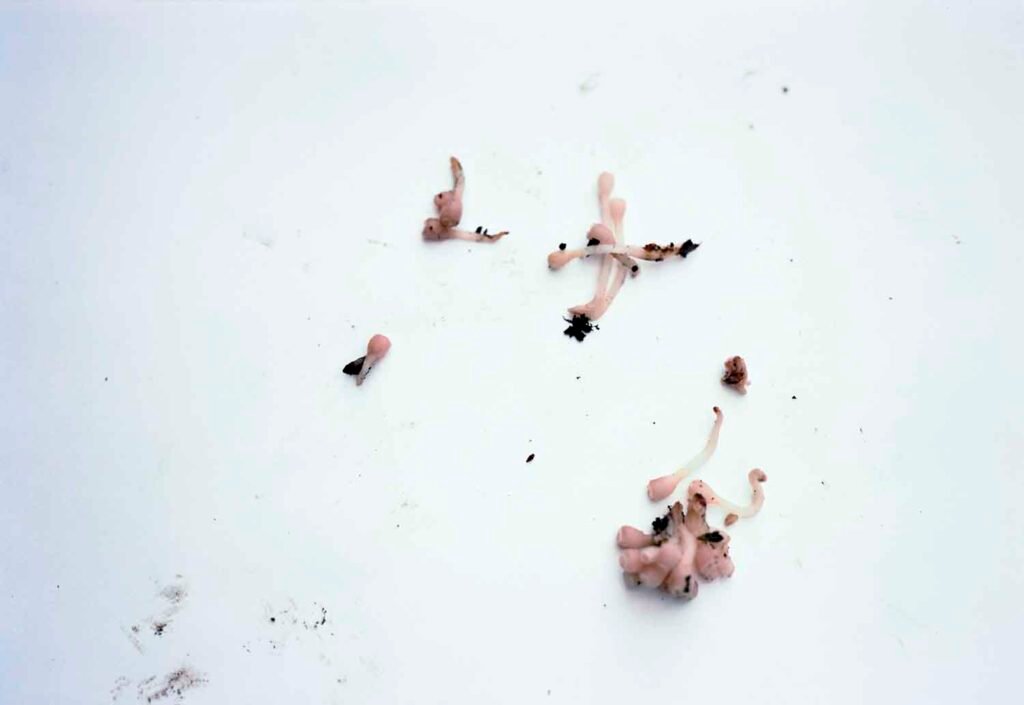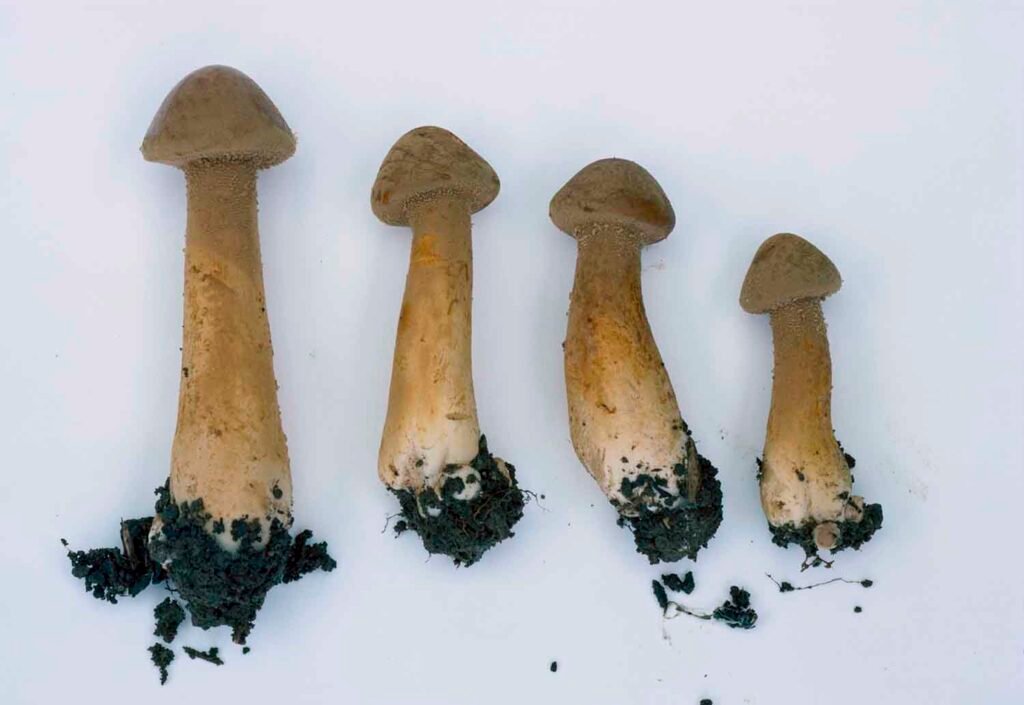On March 11, 2011, a tsunami brought on by a severe earthquake caused a nuclear accident in Fukushima. More than 100,000 people had to leave their homes by order of the Japanese government, which also prohibited the collection and consumption of mushrooms in the area because of radiation. Photographer Takashi Homma visited and photographed the forests of Fukushima in the autumn of 2011, six months after the accident.
Fungi are one of the fastest absorbing organisms of radiation. Various types of mould were discovered inside the broken, highly radioactive reactor number 4 at Chernobyl, where it was found that they are capable of converting radiation into chemical energy for growth. Mushrooms From the Forest suggests that we should see mushrooms as possible allies for life among the ruins of capitalism, both in the short and long term.
The series is not only made up of photographs taken immediately after a nuclear disaster; it also includes images taken 25 years later in the forests of Chernobyl, Sweden and Finland, where the authorities regulated the consumption of mushrooms because of the radioactive cloud from the Ukrainian accident in 1986.
The project is completed with photographs taken in Stony Point, USA, the artists’ commune where the experimental composer John Cage developed his fervent interest in mycology. In this work, following in the footsteps of Cage, who first collected mushrooms out of hunger during the Great Depression of the 1930s, Homma aims to listen and learn to live with the mushrooms that inhabit the forests and make them possible.
Takashi Komma was born in Tokyo, Japan, in 1962, where he still lives today. He studied Photography at the Nihon University College of Art and left his studies in 1984 to work as a photographer for an advertising agency in Tokyo. In 1991 he moved to London for two years to work as a photographer for the i-D magazine. Homma has published several photography books throughout his career, including “Tokyo and My Daughter” (2021), “Symphony – Mushrooms from the Forest”(2019), “Trails” (2019) or “The Narcissistic City” (2016), among others. In 1999 he received the Kimura Ihei Prize for his project “Tokyo Suburbia”, a work now considered a classic. Homma had his first solo museum exhibition “New Documentary”, which was shown in three museums in Japan between 2011 and 2012. His work has been widely exhibited in Japan, as well as in Switzerland, Holland, Germany, Iceland, Italy and the USA. He is currently a visiting professor at the Tokyo Zokei University Graduate School.
Promoted by the Begihandi collective, GETXOPHOTO is a festival dedicated to image that takes place in Getxo (Basque Country) for the last 15 years. It brings different proposals from photographers and visual storytellers from all over the world to the city, setting a contemporary conversation about the theme proposed each year.
GETXOPHOTO inhabits the public space and continues supporting the use of formats, stands and unconventional exhibition spaces to show the different images. This is a thematic festival that every three years works together with a different curator who understands the photography as a tool of knowledge, communication, and of course artistic enjoyment. Exhibitions, installations, projections, collaborations, experimental laboratories and many activities complete the program of the Festival.
Jon Uriarte is the curator of GETXOPHOTO 2022.













